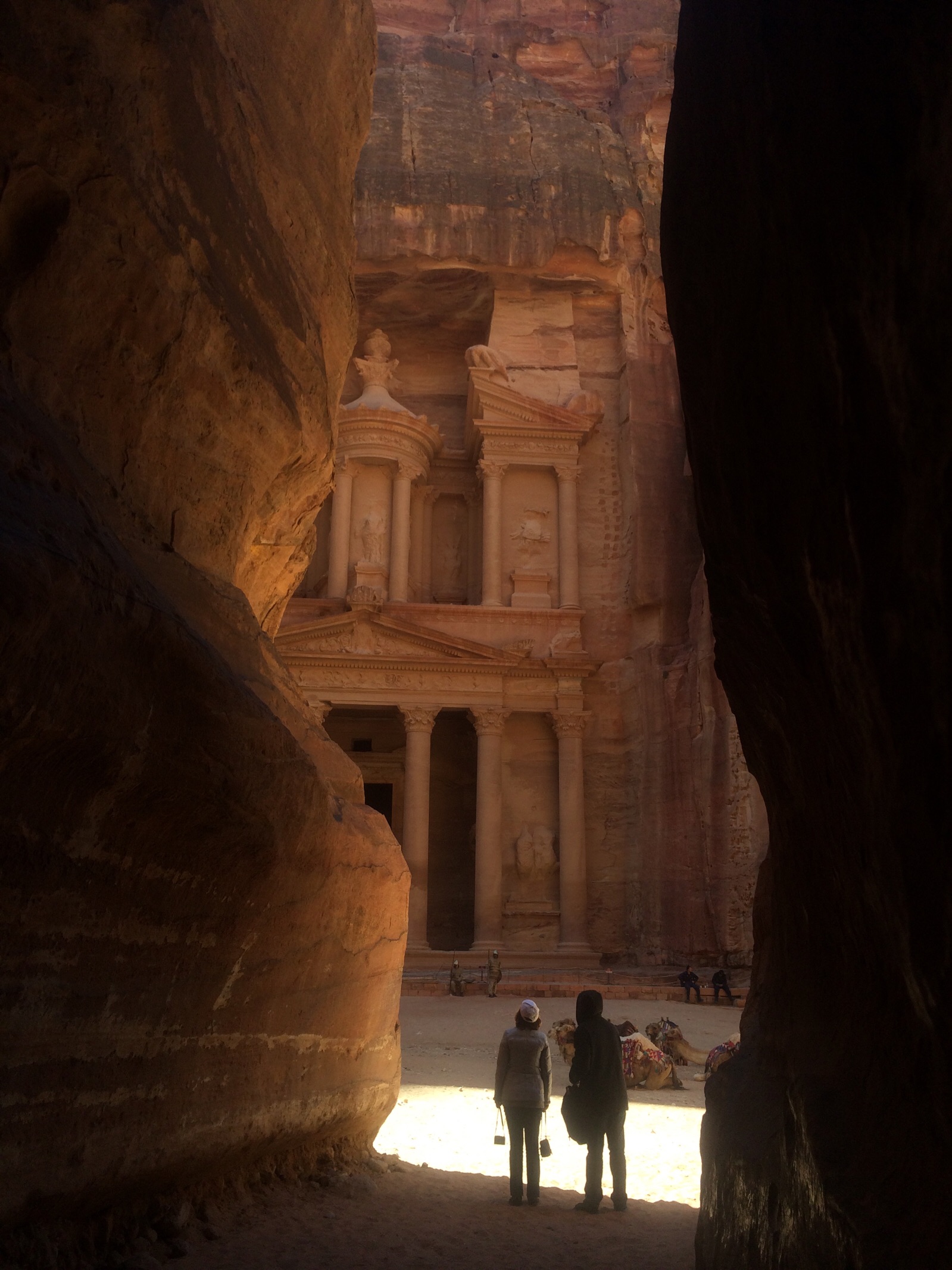
The Kingdom of Jordan has few resources to raise their citizens above the poverty level. They have no oil reserves like the Arabic countries around them, and the landscape is barren desert or arid mountains. Most agriculture is primitive, low yield farming eg. ‘plant seeds on steep hillsides, wait for rain, hope for the best.’
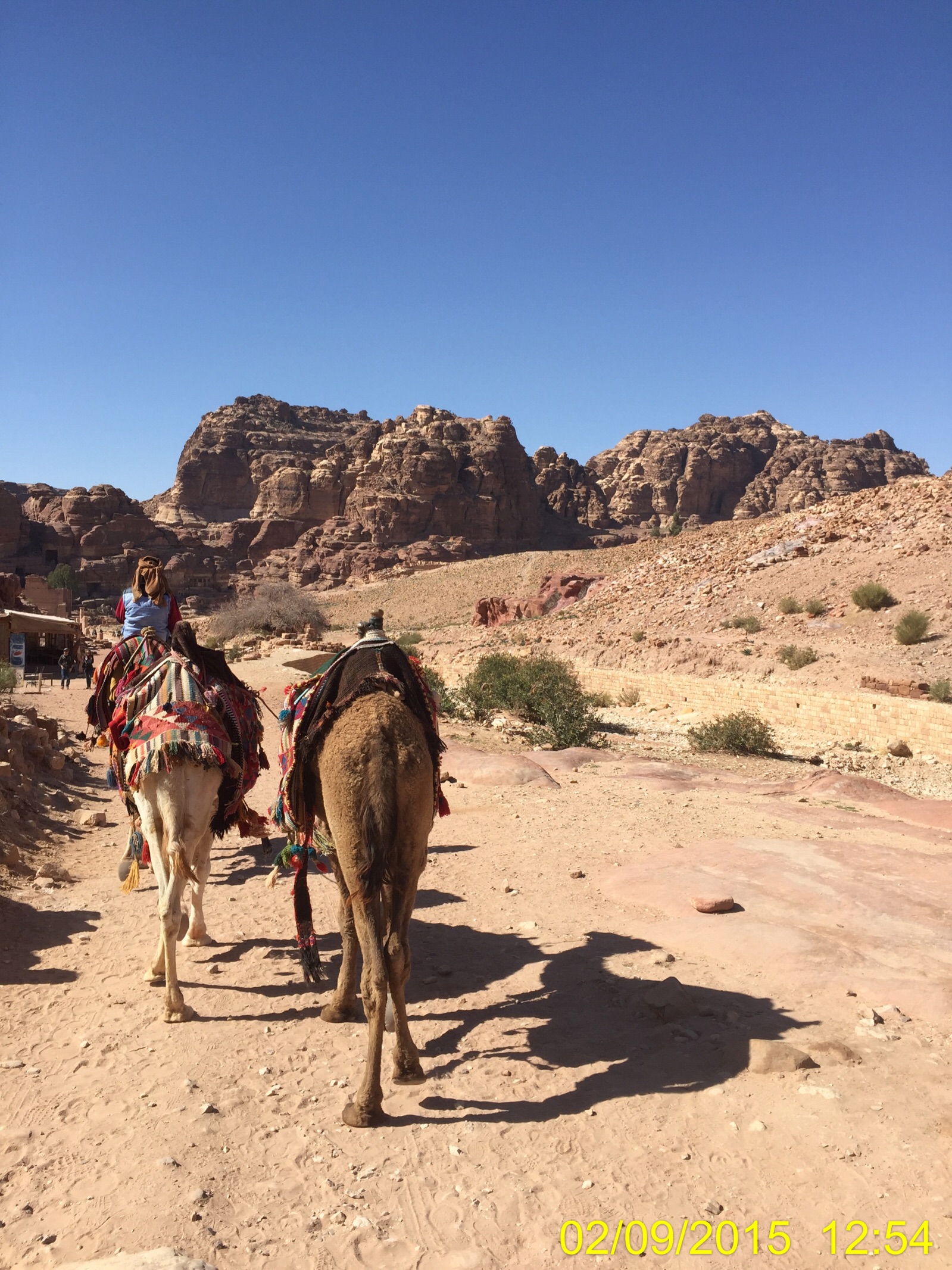
Up a valley near the Israeli border at Eilat, our Jordanian driver boasted about this one unique, modern area of agriculture, with pumping stations and greenhouses; in the Negev Desert due west in Israel, there were hundreds of these same size sites. Israel’s ability to wrest water and food production from this landscape is very inspiring. As were the miles of date palm groves seen in Israel, not in evidence in Jordan. Jordan remains very much a third world country; heartbreaking, really.
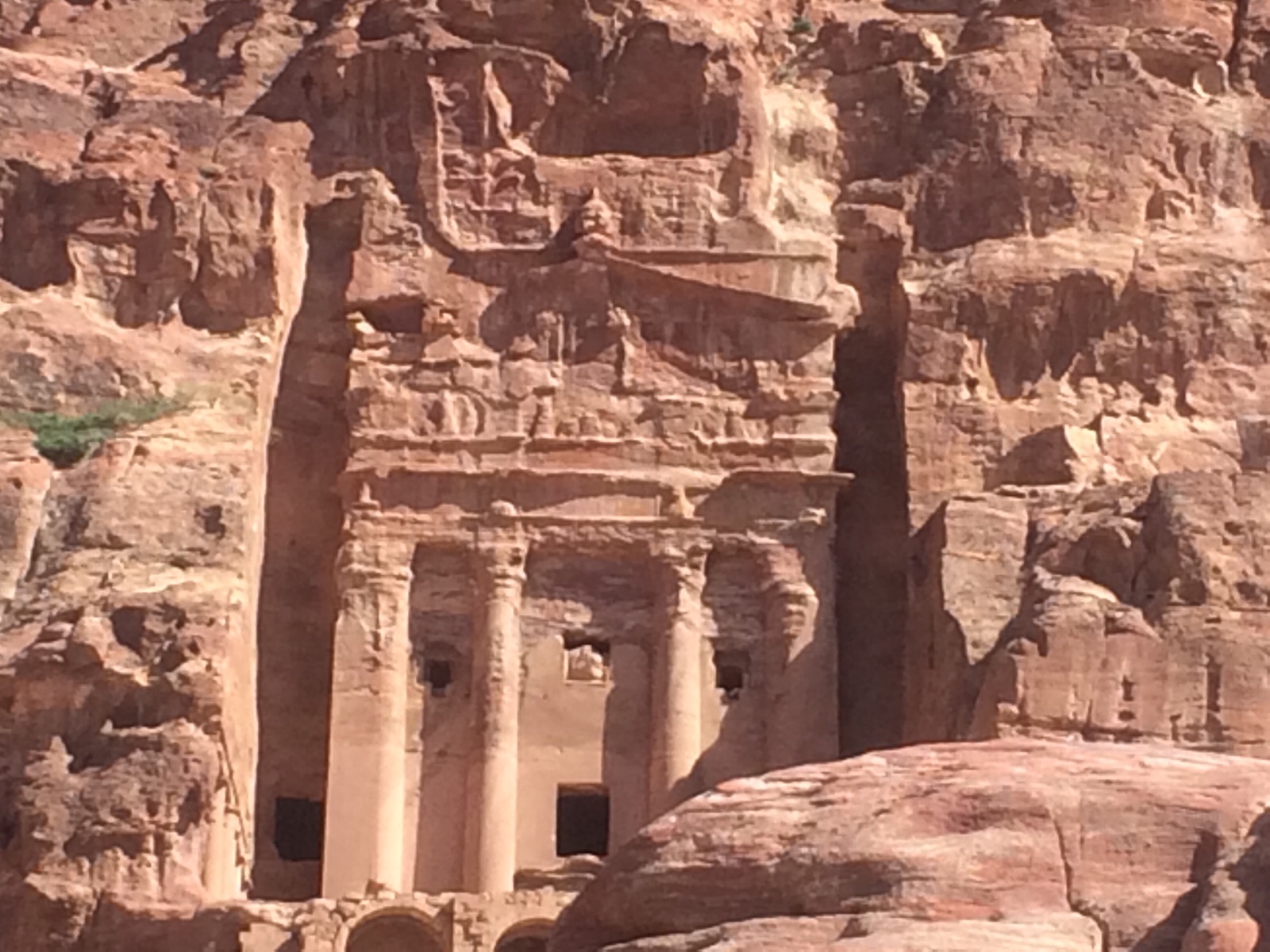
Jordan’s greatest resource is the residents, who are warm, charming and very hard working, many of them the aboriginal Bedouin nomadic tribes. The second biggest resource is Jordan’s World Heritage Site, Petra National Park.
Most of us first encountered it in the movie, “Raiders of the Lost Ark.”
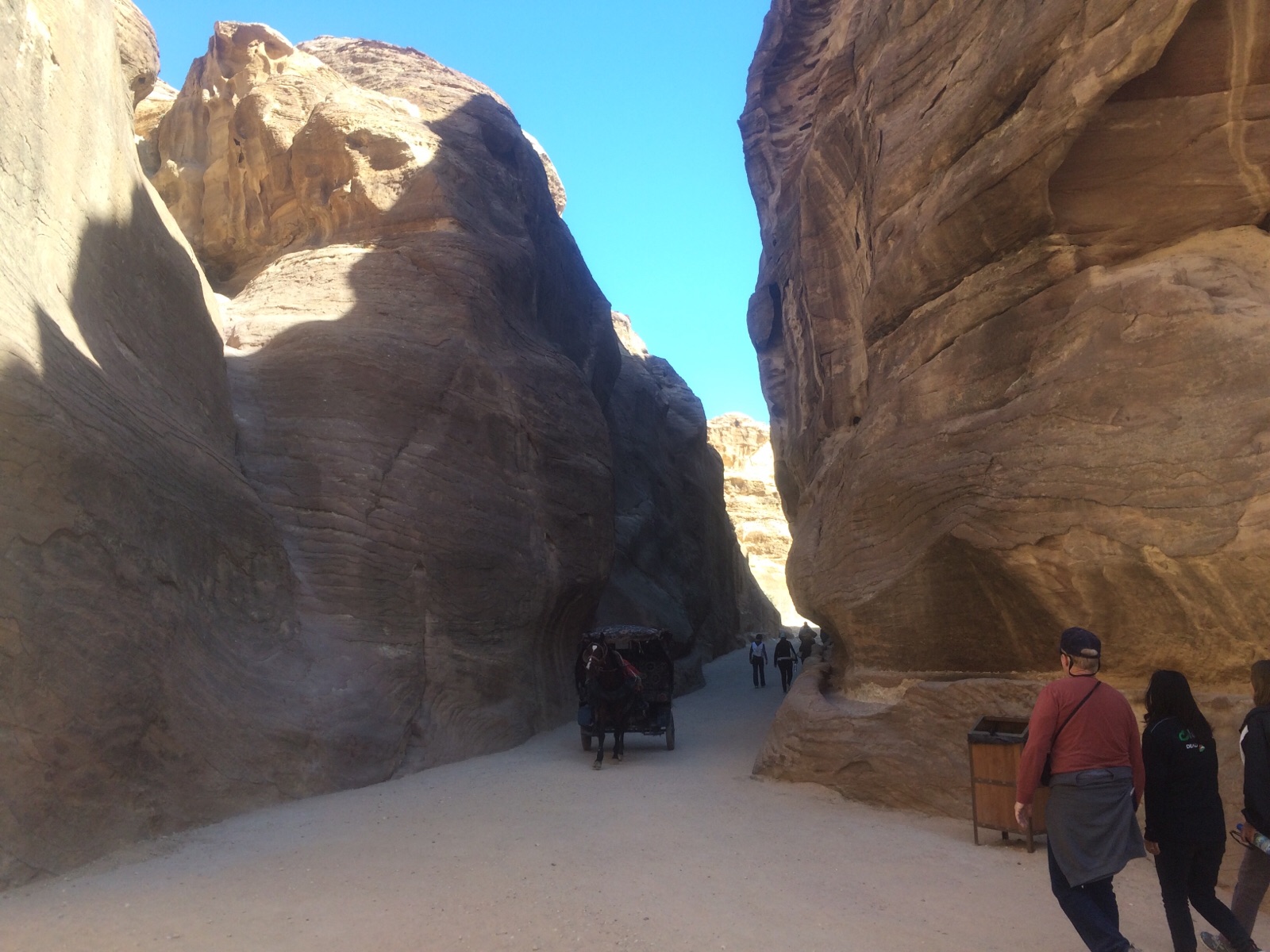
It is just so fantastic rising up out of the desert after a hike through the shady, steep walled gully called the Siq; it looks like a movie set constructed on a back lot at MGM studios in Hollywood.

Even the Siq has tombs and carvings as it was the Nabatean entry route for the spice trade. Why not advertise your camels and caravaneering businesses with life sized camels carved in the rock in the Siq? (However, I can’t look at the carving below without thinking of the little girl’s explanation in the movie, “Little Miss Sunshine” that she is called “Camel Toes” by the mean boys at school because she is ‘strong like a camel.’)
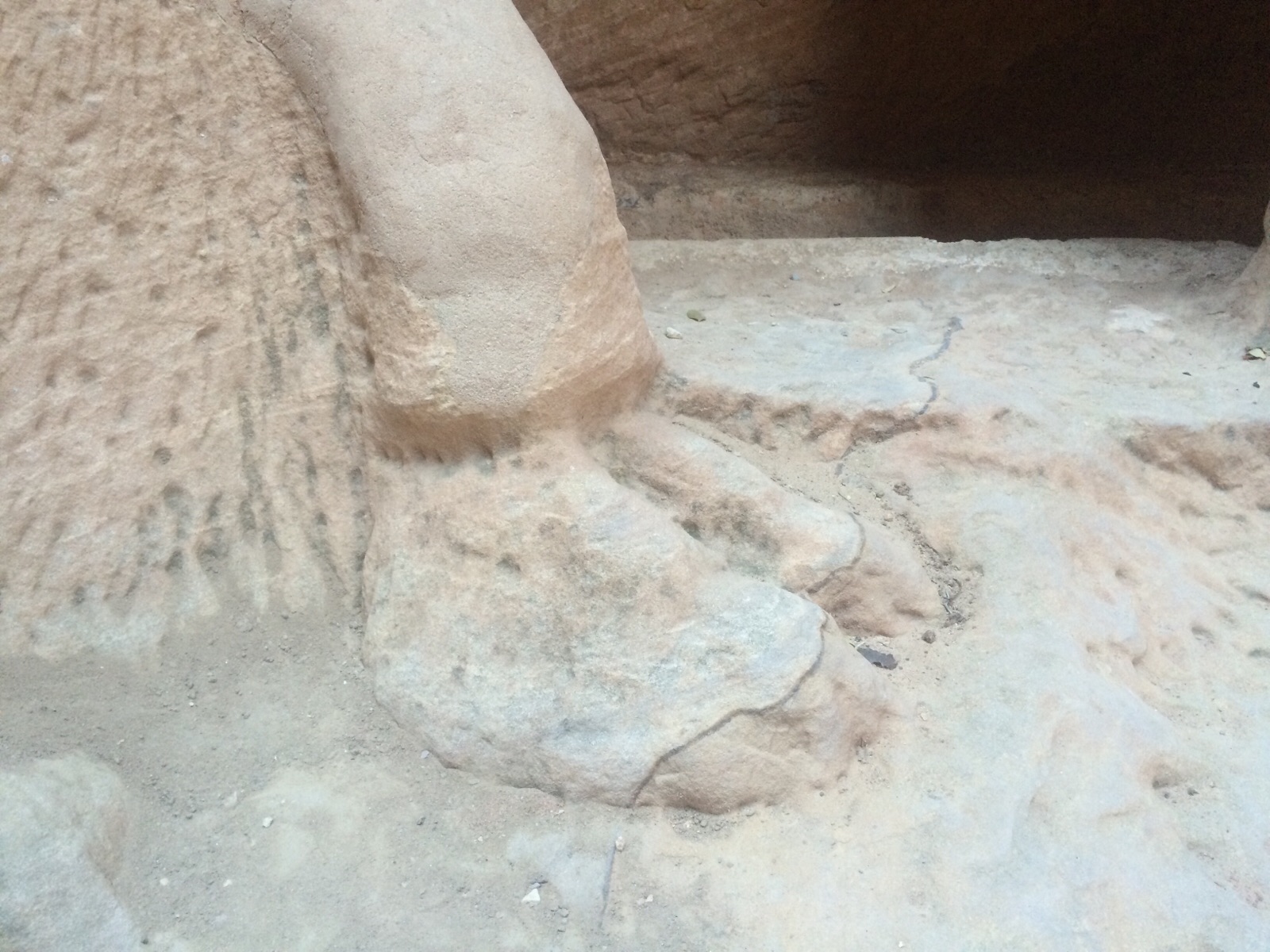
The Nabateans who carved this city out of the exposed sandstone walls carved and decorated thousands of tombs and even held off Roman invasions until 106 AD when the Romans altered the trade route to the North. That worked better than a siege to destroy the domination of Nabatean influence as the controllers of trade routes between China, India, Arabia and the Mediterranean; ultimately the Nabatean king swore allegiance to the Romans to save his city. Fortunately, the Nabateans had already incorporated Graeco-Roman, Egyptian, Mesopotamian styles into their carvings and they were left standing by the Romans.
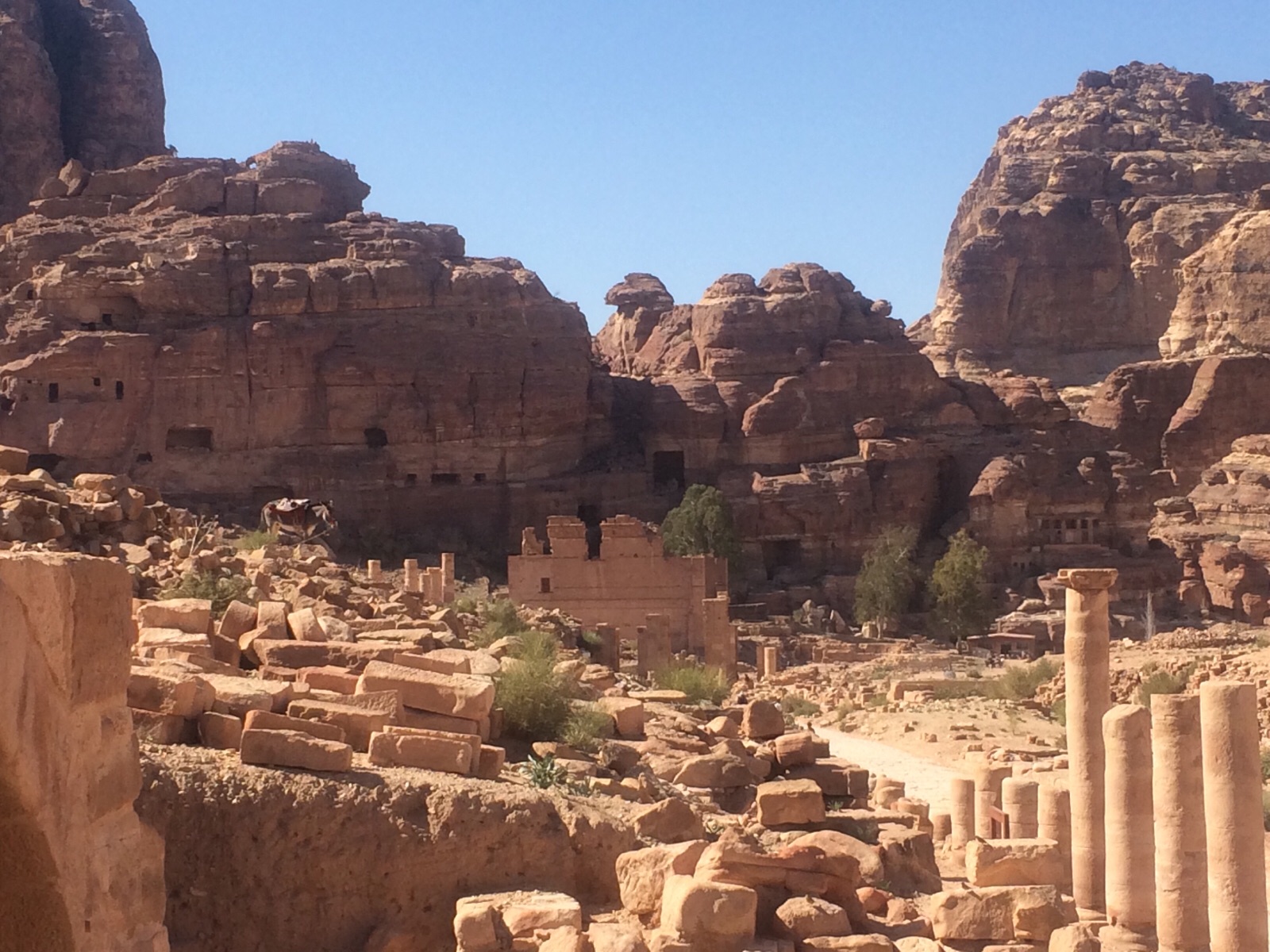
However, the rise of Christianity meant the decrease in sacrifices and pagan rituals, and thus the demand for frankincense and trade in general along these routes was destroyed. The City was gradually abandoned, and lost to the West until a Swiss traveler rediscovered it in 1812.
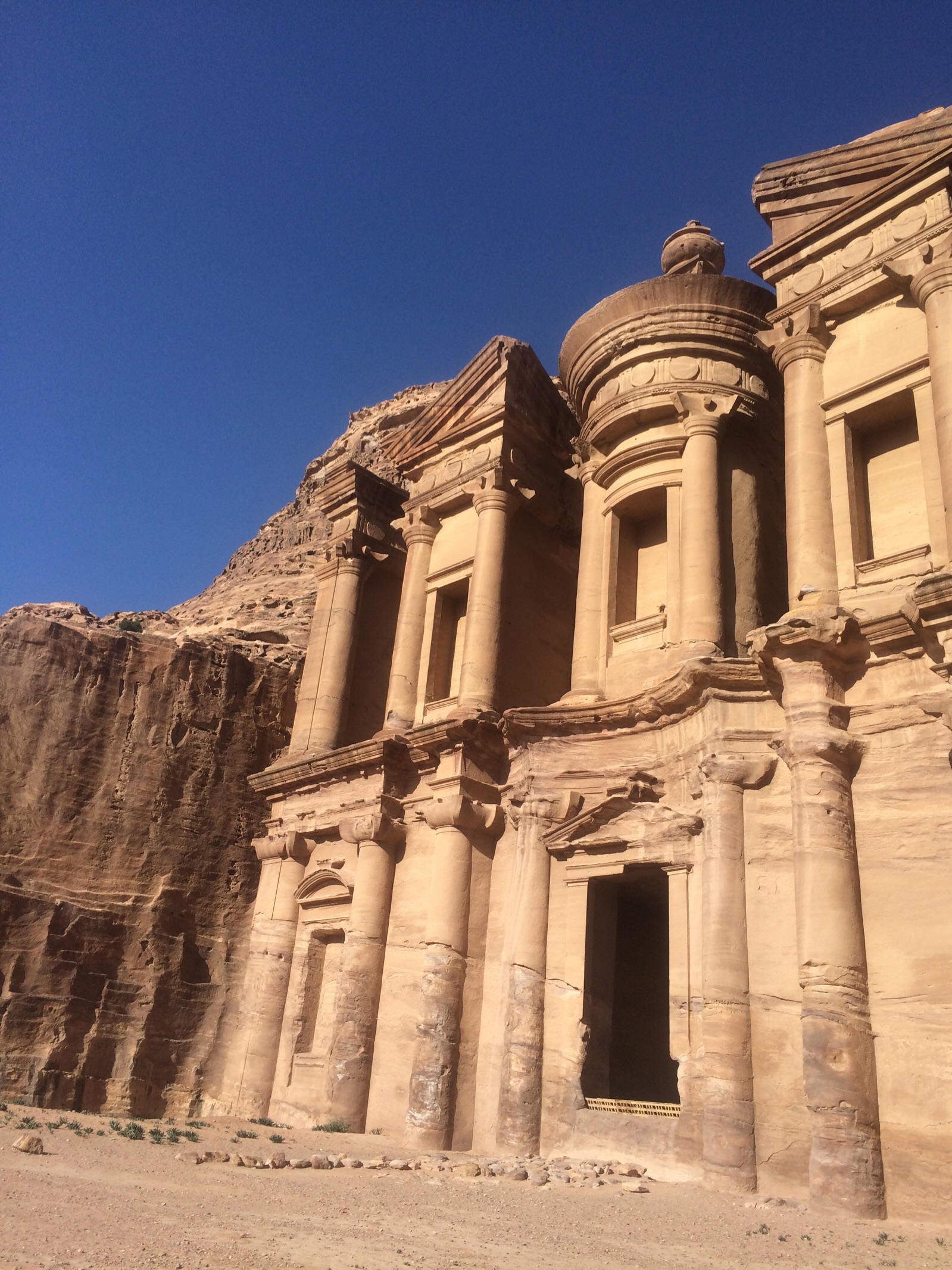
What you see below is an example of Nabatean engineering advances; clay water pipes with widened areas and openings to reduce pressure and encourage fast flow, hidden in the rock 16 feet above the trade route in 100 BCE before it filled with silt to its current level where we walk beside it now. It saved the City from multiple sieges as water flowed from buried cisterns outside the Siq, downhill through these hidden pipes.

When you exit the Siq into the sunlight, you are surrounded by steep pitted rocks filled with caves, tombs, amphitheaters seating 7,000, small carvings, colonnades, and enormous facades carved with detailed designs.
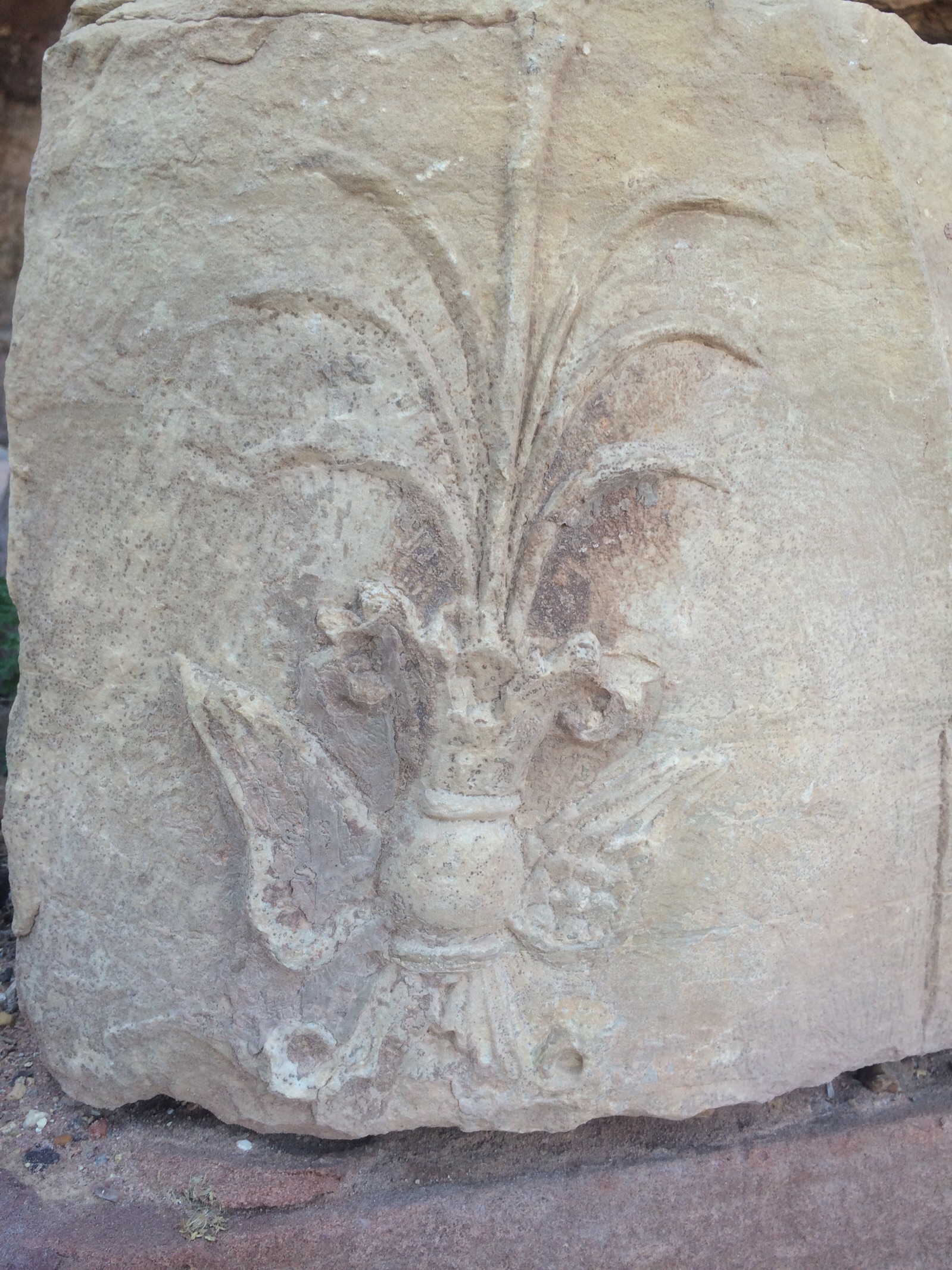
Although the Treasury and the Monastery are in good condition the exposure to erosive wind, rain and shifting sands is destroying other parts. One freestanding arch that Sally viewed on a visit 12 years ago was three rock strings thick. Now it is one fragile rock string across. Go soon, and give the Jordanian economy a boost!
We hiked 12.5 miles and climbed 66 stories to access three high trails. Lucky we did that on our first day as the following days were impaired by a 45 mph gusting sandstorm darkened the day and wrecked visibility.
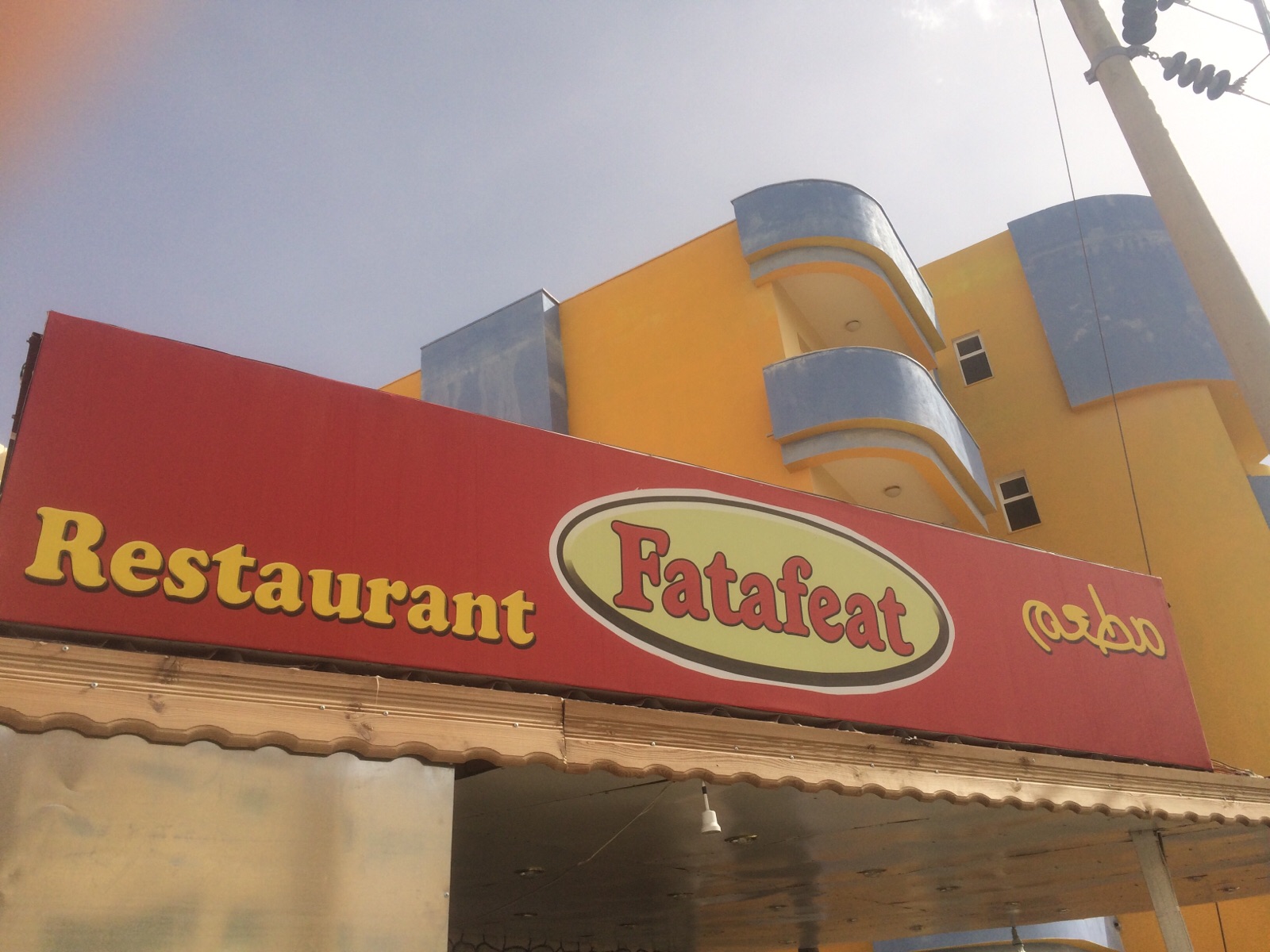
Instead we camped out at our favorite local Jordanian restaurant and ate Mansouf (yoghurt sauce chicken and rice eaten Bedouin style with the right hand) and a drinkable sweet cream of wheat dessert, sock-a-leb, and hot bread that was a chewy high gluten quick bread between a tortilla and naan.
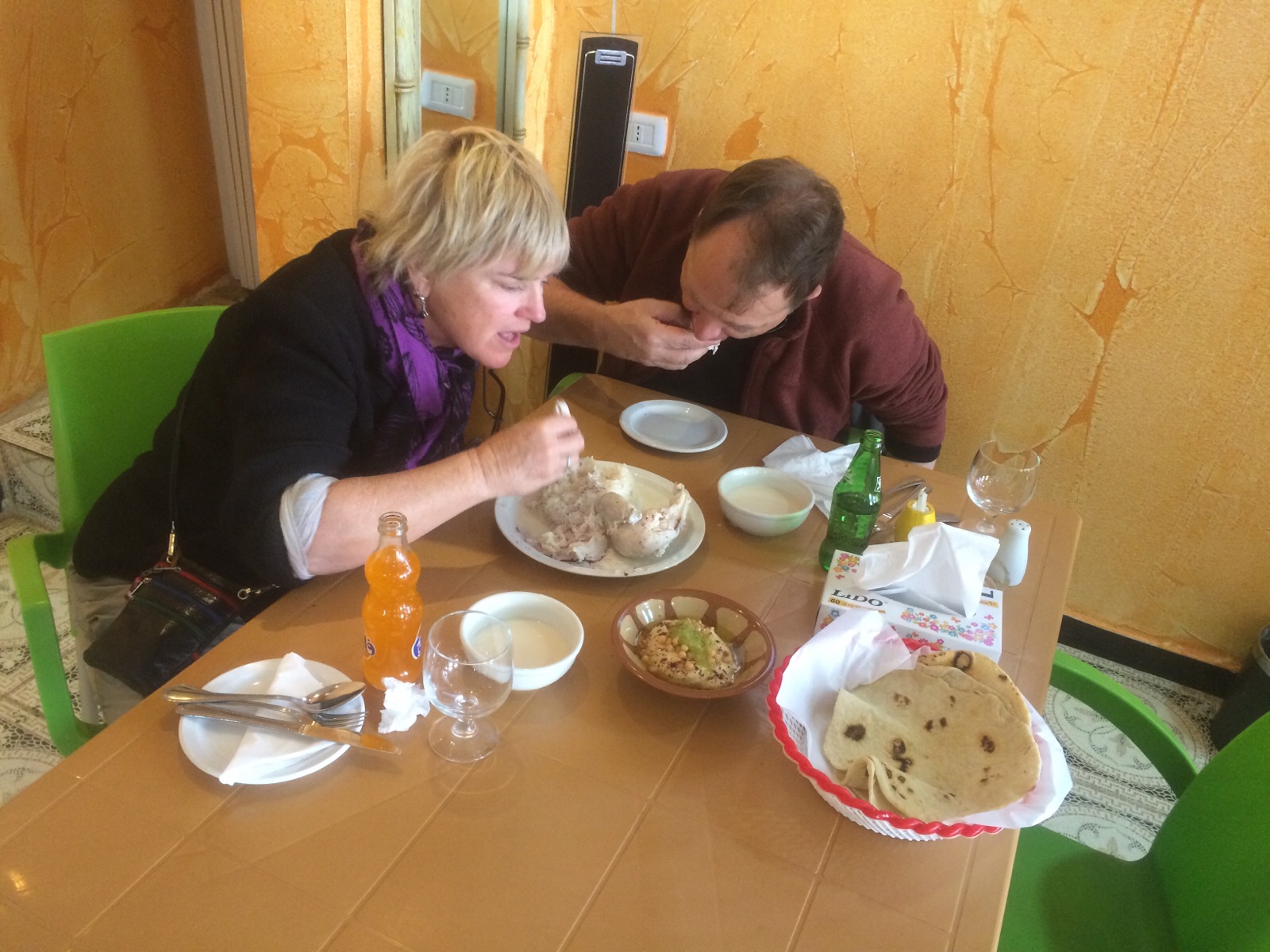
…and then we came back for Macloub (saffron chicken and rice) and a flan like dessert…
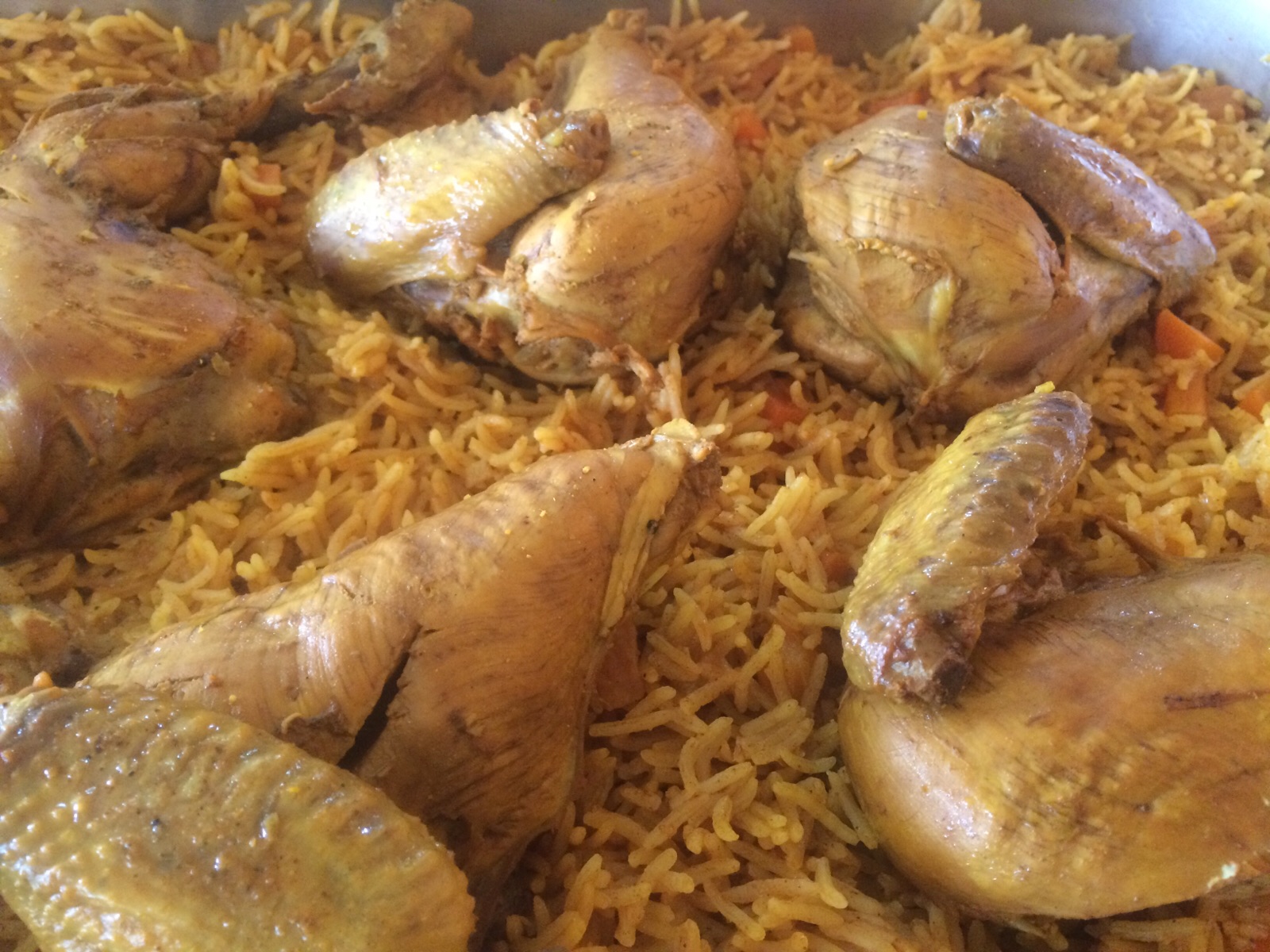
If you go, skip the more expensive and less tasty places on the entry road. Walk up one block to FETAFEAT (next to the blue and yellow apartment building) where the locals eat like kings for $7 each. Our friend Othman and his mother, the chef will take good care of you!
Location:Petra, Jordan

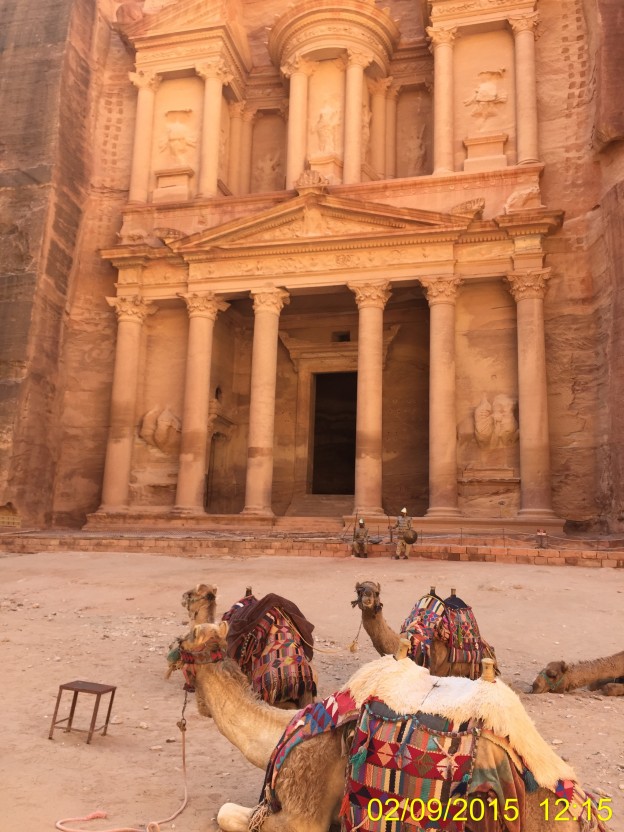
Simply fascinating.
The very day I received your blog on Petra, Irene saw a Nova show on Petra about how they probably did the carving and how the engineers figured out the dams and reservoirs to control flash floods (tested and explained) . Highly recommended. Go to pbs.org and follow links to Nova. Thanks for sharing your experience since we’ll never get there. Irene and Frank